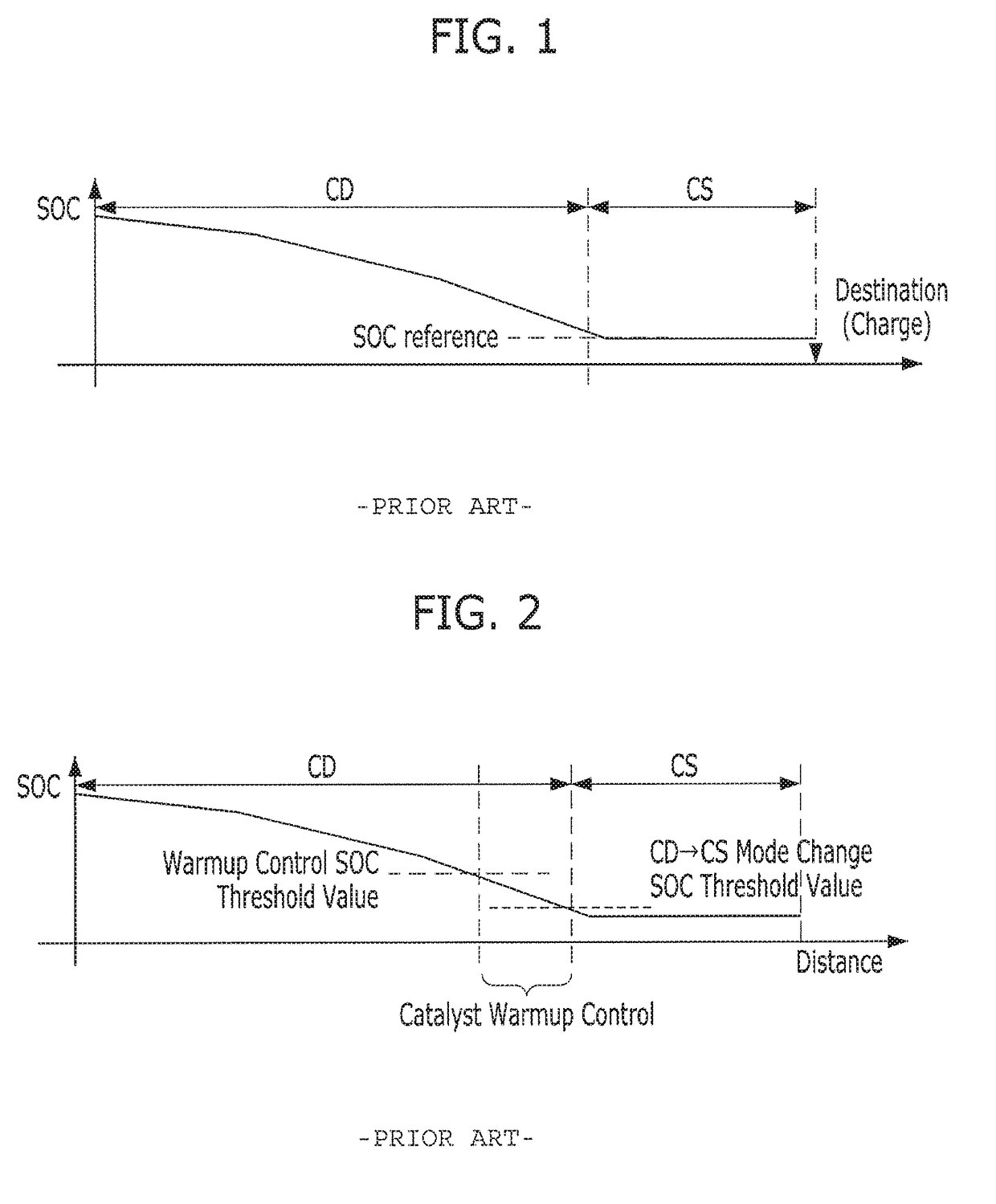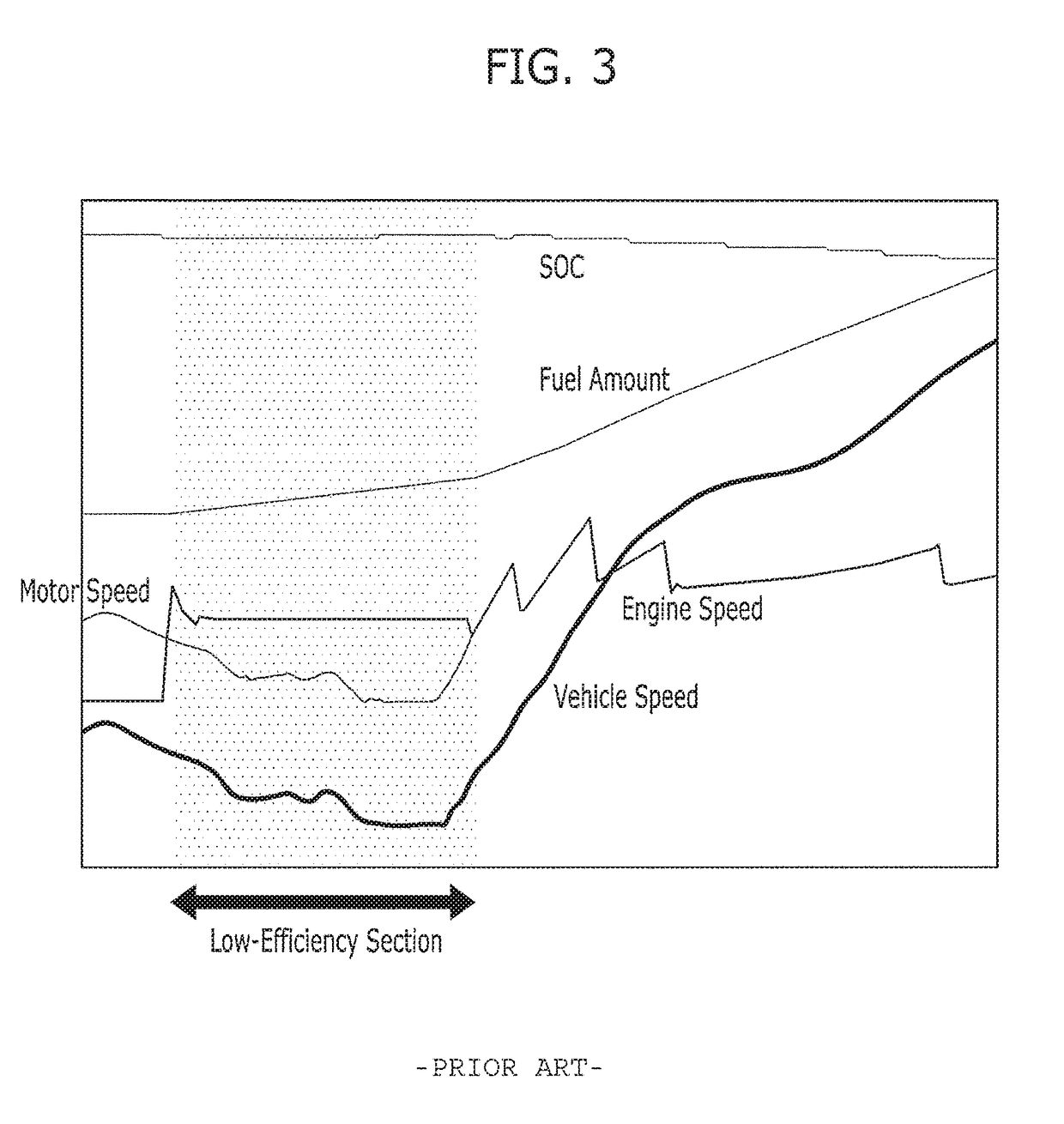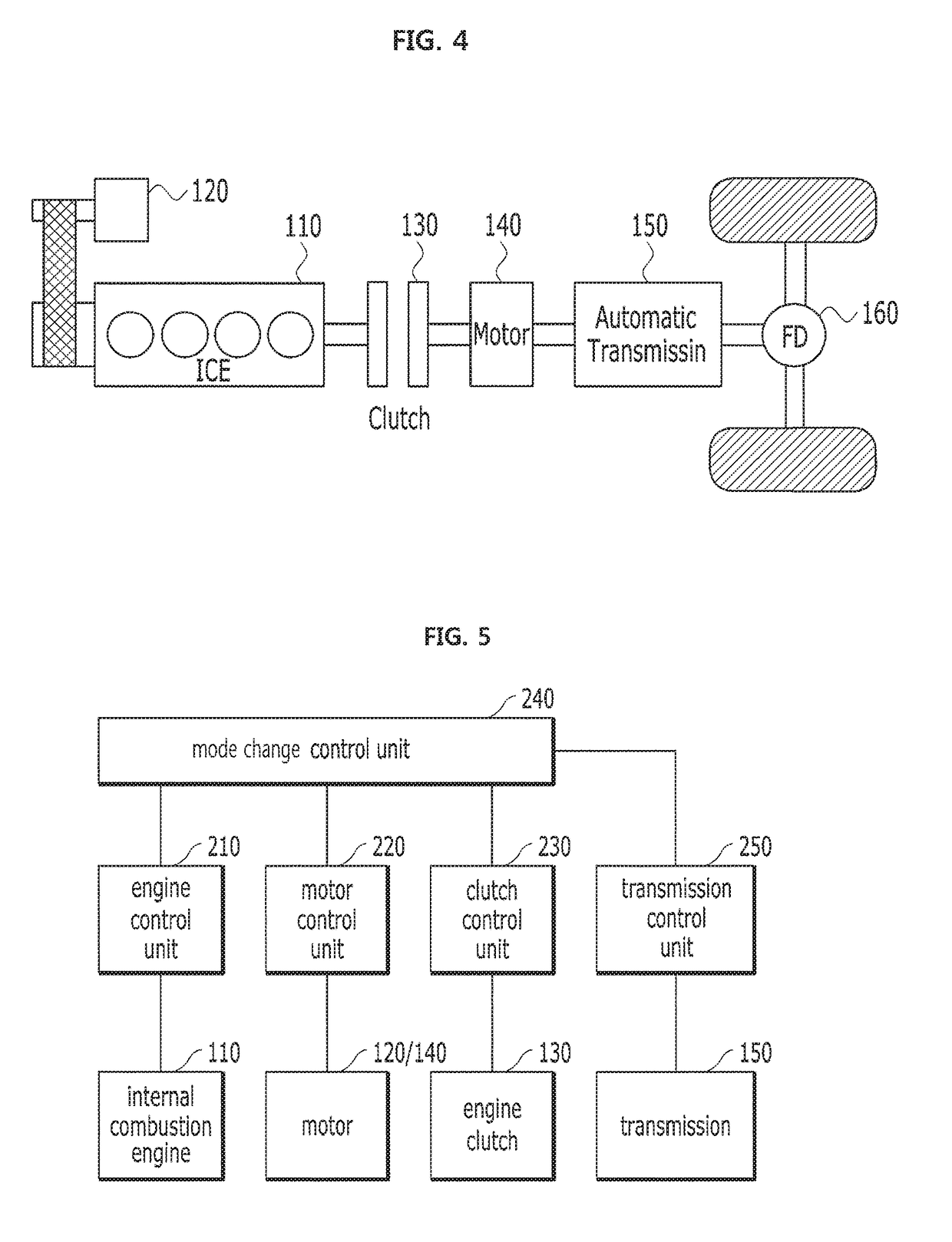Hybrid vehicle and method of controlling driving mode thereof
- Summary
- Abstract
- Description
- Claims
- Application Information
AI Technical Summary
Benefits of technology
Problems solved by technology
Method used
Image
Examples
Embodiment Construction
[0031]Reference will now be made in more detail to a hybrid vehicle and an efficient transmission control method for the same according to the present disclosure, examples of which are illustrated in the accompanying drawings. With respect to constituent elements used in the following description, suffixes “module” and “unit” are given or mingled with each other only in consideration of ease in the preparation of the specification, and do not have or serve as different meaning.
[0032]First, the structure of a hybrid vehicle, to which embodiments of the present disclosure may be applied, will be described with reference to FIG. 4.
[0033]FIG. 4 illustrates an example of the power train structure of a hybrid vehicle to which embodiments of the present disclosure may be applied.
[0034]Referring to FIG, 4, there is illustrated a power train of a hybrid vehicle, which adopts parallel-type hybrid system in which an electric motor (or a driving motor) 140 and an engine clutch 130 are mounted b...
PUM
 Login to View More
Login to View More Abstract
Description
Claims
Application Information
 Login to View More
Login to View More - R&D
- Intellectual Property
- Life Sciences
- Materials
- Tech Scout
- Unparalleled Data Quality
- Higher Quality Content
- 60% Fewer Hallucinations
Browse by: Latest US Patents, China's latest patents, Technical Efficacy Thesaurus, Application Domain, Technology Topic, Popular Technical Reports.
© 2025 PatSnap. All rights reserved.Legal|Privacy policy|Modern Slavery Act Transparency Statement|Sitemap|About US| Contact US: help@patsnap.com



